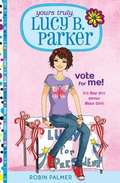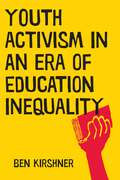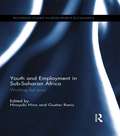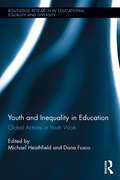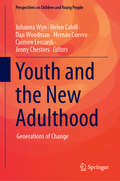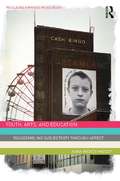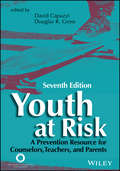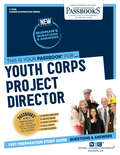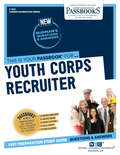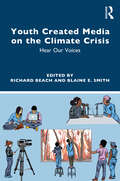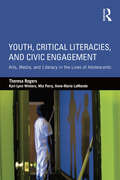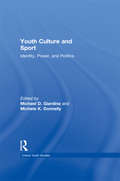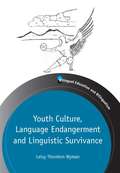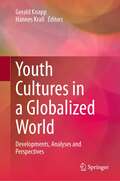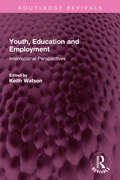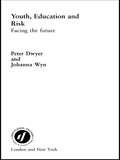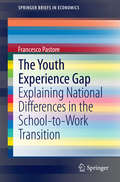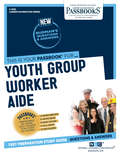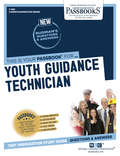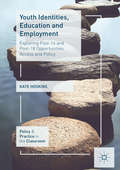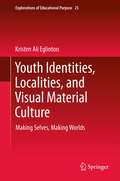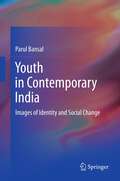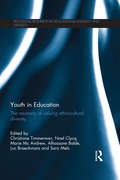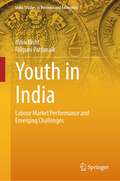- Table View
- List View
Yours Truly, Lucy B. Parker: Vote for Me!
by Robin PalmerLucy B. Parker is running for class president! Sure, Lucy could let her frister (friend + sister), teen superstar Laurel Moses, campaign for her, but Lucy wants to win as Lucy, not as Laurel Moses' less-pretty-less- talented stepsister. To make matters worse, Lucy's feeling totally ignored by her dad and his girlfriend, who are preparing for their new baby. How is Lucy going to manage her famous frister, a soon-to-exist baby, and the campaign of the year all at once?
Yours Truly, Lucy B. Parker: Vote for Me!
by Robin PalmerLucy B. Parker is running for class president! Sure, Lucy could let her frister (friend + sister), teen superstar Laurel Moses, campaign for her, but Lucy wants to win as Lucy, not as Laurel Moses' less-pretty-less- talented stepsister. To make matters worse, Lucy's feeling totally ignored by her dad and his girlfriend, who are preparing for their new baby. How is Lucy going to manage her famous frister, a soon-to-exist baby, and the campaign of the year all at once? .
Youth Activism in an Era of Education Inequality (Qualitative Studies in Psychology #2)
by Ben KirshnerWinner, 2016 Best Authored Book presented by the Society for Research on Adolescence<P><P> This is what democracy looks like: Youth organizers in Colorado negotiate new school discipline policies to end the school to jail track. Latino and African American students march to district headquarters to protest high school closure. Young immigration rights activists persuade state legislators to pass a bill to make in-state tuition available to undocumented state residents. Students in an ESL class collect survey data revealing the prevalence of racism and xenophobia. <P> These examples, based on ten years of research by youth development scholar Ben Kirshner, show young people building political power during an era of racial inequality, diminished educational opportunity, and an atrophied public square. The book’s case studies analyze what these experiences mean for young people and why they are good for democracy. What is youth activism and how does it contribute to youth development? How might collective movements of young people expand educational opportunity and participatory democracy? The interdependent relationship between youths’ political engagement, their personal development, and democratic renewal is the central focus of this book. Kirshner argues that youth and societal institutions are strengthened when young people, particularly those most disadvantaged by educational inequity, turn their critical gaze to education systems and participate in efforts to improve them.
Youth and Employment in Sub-Saharan Africa: Working but Poor (Routledge Studies in Development Economics #107)
by Hiroyuki Hino Gustav RanisIt is widely acknowledged that youth unemployment is one of the most critical challenges facing countries in Sub-Saharan Africa. This volume brings together an eminent group of international scholars to analyse the extent and complex nature of this joblessness, and offer a set of evidence-based policy choices that could contribute to solving the problem in the short- and long-run. Part I reviews the existing literature on youth unemployment and underemployment in Sub-Saharan Africa from microeconomic and macroeconomic perspectives, while Part II goes on to present detailed country studies of Ethiopia, Ghana, Kenya and South Africa. These studies offer a deep understanding of the situation on the ground and consider country-specific solutions. Throughout the book it is argued that the standard ILO definition of unemployment is too narrow to correctly portray employment situations in Sub-Saharan Africa. Several alternative measures of unemployment are presented, which show that joblessness is far more pervasive than commonly assumed in the literature. This volume will be of interest to academics and policy makers involved in African development.
Youth and Inequality in Education: Global Actions in Youth Work (Routledge Research in Educational Equality and Diversity)
by Dana Fusco Michael HeathfieldThe transition to adulthood for many is mediated by class, culture, and local/global influences on identity. This volume analyzes the global injustices that create inequities and restrict future opportunities for young people during this transitional time, including poverty, unemployment, human rights, race, ethnicity and location. It critically examines global instances of youth discrimination, offering positive strategies and practices such as youth work that successfully remediate these injustices. With international contributions from Aotearoa New Zealand, Australia, England, Malaysia, Peru, Philippines, Portugal, Morocco, Jordan and the U.S., this volume is particularly important to researchers and scholars in the fields of youth studies, education, and social work.
Youth and the New Adulthood: Generations of Change (Perspectives on Children and Young People #8)
by Johanna Wyn Jenny Chesters Dan Woodman Helen Cahill Hernán Cuervo Carmen LeccardiThis book investigates the life trajectories of Generation X and Y Australians through the 1990s and 2000s. The book defies popular characterizations of members of the ‘precarious generations’ as greedy, narcissistic and self-obsessed, revealing instead that many of the members of these generations struggle to reach the standard of living enjoyed by their parents, value learning highly and are increasingly concerned about the environment and the legacy current generations are leaving for their children and remain optimistic in the face of considerable challenges. Drawing on data from the Life Patterns longitudinal study of Australian youth (an internationally recognized study), the book tells the story of members of these ‘precarious generations’. It examines significant dimensions of young people’s lives across time, comparing how domains such as health and well-being, education, work and relationships intersect to produce the complex outcomes that characterize the lives of members of each of these generations. It also explores the strategies these generations use to make their lives and the ways in which they remain resilient. While the book is based on Australian data, the analysis draws on and contributes to the international literature on young people and social change.
Youth, Arts, and Education: Reassembling Subjectivity through Affect (Routledge Advances in Sociology)
by Anna Hickey-MoodyHow are the arts important in young people’s lives? Youth, Arts and Education offers a groundbreaking theory of arts education. Anna Hickey-Moody explores how the arts are ways of belonging, resisting, being governed and being heard. Through examples from the United Kingdom and Australia, Anna Hickey-Moody shows the cultural significance of the kinds of learning that occur in and through arts. Drawing on the thought of Gilles Deleuze, she develops the theory of affective pedagogy, which explains the process of learning that happens through aesthetics. Bridging divides between critical pedagogical theory, youth studies and arts education scholarship, this book: Explains the cultural significance of the kinds of learning that occur in and through arts Advances a theory of aesthetic citizenship created by youth arts Demonstrates ways in which arts practices are forms popular and public pedagogy Critiques popular ideas that art can be used to fix problems in the lives of youth at risk Youth, Arts and Education is the first post-critical theory of arts education. It will be of interest to students and scholars across the social sciences and humanities, in particular in the sociology of education, arts education, youth studies, sociology of the arts and cultural studies.
Youth at Risk: A Prevention Resource for Counselors, Teachers, and Parents
by David Capuzzi Douglas R. GrossThis comprehensive text, written by experts in each topical area, provides research-based approaches designed for work with youth in the difficult transition from adolescence to adulthood. Developmental in its orientation, the text moves from population definition and identification, to causal factors and issues most often identified with placing youth at risk, to a prevention-intervention paradigm specifically created for teens. Illustrative case studies and enlightening sidebars enhance reader self-awareness, promote self-study and skill development, and aid in the comprehension of the concepts and applications of chapter material.
Youth Corps Project Director: Passbooks Study Guide (Career Examination Series)
by National Learning CorporationThe Youth Corps Project Director Passbook® prepares you for your test by allowing you to take practice exams in the subjects you need to study. It provides hundreds of questions and answers in the areas that will likely be covered on your upcoming exam.
Youth Corps Recruiter: Passbooks Study Guide (Career Examination Series)
by National Learning CorporationThe Youth Corps Recruiter Passbook® prepares you for your test by allowing you to take practice exams in the subjects you need to study. It provides hundreds of questions and answers in the areas that will likely be covered on your upcoming exam.
Youth Created Media on the Climate Crisis: Hear Our Voices
by Richard Beach Blaine E. SmithThis timely book provides effective methods and authentic examples of teaching about climate change through digital and multimodal media production in the English Language Arts classroom. The chapters in this edited volume demonstrate the benefits of addressing climate change in the classroom through innovative media production and cover a range of different types of media, including video/digital storytelling, social media, art, music, and writing, with rich resources for instruction in every chapter. Through the engaging ideas and strategies, the contributors equip educators with the critical tools for supporting students’ media production. In so doing, they offer new perspectives on how students can employ media and production techniques to critique the status quo, call for change, and acquire new literacy skills. As the effects of the climate crisis become increasingly visible to the youth population, this book helps foster and support youth agency and activism. Youth Media Creation on the Climate Change Crisis: Hear Our Voices is a necessary text for students, preservice teachers, and educators in literacy education, media studies, social and environmental studies, and STEM education. The eBook+ version of the text features embedded audio and video components as well as interactive links to reflect the multimodal nature of students’ work, spotlighting how youth media production supports the development of students’ critical literacy skills and shapes their voices and identities.
Youth, Critical Literacies, and Civic Engagement: Arts, Media, and Literacy in the Lives of Adolescents
by Kari-Lynn Winters Mia Perry Anne-Marie LaMonde Theresa RogersThrough stories of youth using their many voices in and out of school to explore and express their ideas about the world, this book brings to the forefront the reality of lived literacy experiences of adolescents in today’s culture in which literacy practices reflect important cultural messages about the interplay of local and global civic engagement. The focus is on three areas of youth civic engagement and cultural critique: homelessness, violence, and performing adolescence. The authors explore how youth appropriate the arts, media, and literacy as resources and how this enables them to express their identities and engage in social and cultural engagement and critique. The book describes how the youth in the various projects represented entered the public sphere; the claims they made; the ways readers might think about pedagogical engagements, practice, and goals as forms of civic engagement; and implications for critical and arts and media-based literacy pedagogies in schools that forward democratic citizenship in a time when we are losing sight of issues of equity and social justice in our communities and nations.
Youth Culture and Sport: Identity, Power, and Politics (Critical Youth Studies)
by Michael D. Giardina Michele K. DonnellyYouth Culture and Sport critically interrogates and challenges contemporary articulations of race, class, gender, and sexual relations circulating throughout popular iterations of youth sporting culture in late-capitalism. Written against the backdrop of important changes in social, cultural, political, and economic dynamics taking place in corporate culture’s war on kids, this exciting new volume marks the first anthology to critically examine the intersection of youth culture and sport in an age of global uncertainty. Bringing together leading scholars from cultural studies, gender studies, sociology, sport studies, and related fields, chapters range in scope from 'action' sport subcultures and community redevelopment programs to the cultural politics of white masculinity and Nike advertising. It is a must read for anyone interested in gaining a better understanding of the role sport plays in the construction of experiences, identities, practices, and social differences of contemporary youth culture.
Youth Culture, Language Endangerment and Linguistic Survivance
by Leisy Thornton WymanDetailing a decade of life and language use in a remote Alaskan Yup'ik community, Youth Culture, Language Endangerment and Linguistic Survivance provides rare insight into young people's language brokering and Indigenous people's contemporary linguistic ecologies. This book examines how two consecutive groups of youth in a Yup'ik village negotiated eroding heritage language learning resources, changing language ideologies, and gendered subsistence practices while transforming community language use over time. Wyman shows how villagers used specific Yup'ik forms, genres, and discourse practices to foster learning in and out of school, underscoring the stakes of language endangerment. At the same time, by demonstrating how the youth and adults in the study used multiple languages, literacies and translanguaging to sustain a unique subarctic way of life, Wyman illuminates Indigenous peoples' wide-ranging forms of linguistic survivance in an interconnected world.
Youth Cultures in a Globalized World: Developments, Analyses and Perspectives
by Hannes Krall Gerald KnappThis book examines the relation between the phenomenon of globalization, changes in the lifeworld of young people and the development of specific youth cultures. It explores the social, political, economic and cultural impact of globalization on young people. Growing diversity in their lifeworlds, technological development, migration and the ubiquity of digital communication and representation of the world open up new forms of self-representation, networking and political expression, which are described and discussed in the book. Other topics are the impact of globalization on work and economy, global environmental issues such as climate change, political movements which put “nationalism first”, change of youth`s values and the significance of body, gender and beauty. The book highlights the challenges of young people in modern life, as well as the way in which they express themselves and engage in society – in culture, politics, work and social life.
Youth, Education and Employment: International Perspectives (Routledge Revivals)
by Keith WatsonFirst published in 1983, Youth, Education and Employment tries to highlight the scale of the problem of youth unemployment in industrial societies by examining it from a variety of angles, and by drawing upon developments in other countries including those of the developing world. Examples are taken from France, Germany, Denmark and Sweden as well as from the United Kingdom, and also from Cuba and small island communities. This important volume shows the underlying causes of youth unemployment and offers positive solutions in particular stressing the need for a reappraisal of many educational practices. This book is a must read for educationists, policy makers and students of public policy.
Youth, Education and Risk: Facing the Future
by Johanna Wyn Peter DwyerYouth, Education and Risk: Facing the Future provides a provocative and valuable insight into how the dramatic social and economic changes of the last twenty years have affected the lives of Western youth. Covering young people's attitudes towards relationships and health, the authors provide a comprehensive perspective on young people in Western society in the 1990s.The book reviews ten years of research, policy and practice as related to the 15-25 age group and compares data from the UK, Australia, the USA and Canada. It also argues for the need to develop new research and policy frameworks that are more in tune with the changed conditions of life for Western youth. The book sets out the conceptual basis for a new approach to youth and the practical implications for research, education and youth policy in the new millenium.
The Youth Experience Gap
by Francesco Pastore"The education to work transition of young people is key to a successful work-life and to fight youth unemployment. The book provides an impressive outline of the facts and convincing insights of the potential causes. This offers a large and broader audience help to adjust properly to achieve a better life. " Klaus F. Zimmermann, IZA, Bonn, Germany This work points to the youth experience gap as a key concept to explain the meager employment opportunities and earnings many young people face. The transition from education to work remains a long dark tunnel around the world. However, this book shows that there are striking differences between countries: in Germany, the young people of today are no worse off than their adult counterparts, while in Southern European and Eastern European countries they fare 3 through 4 times worse. The current economic and financial crisis has further exacerbated the situation for young people in many advanced economies. Observers are divided as to the optimal design of youth employment policy. Liberalists believe that the market itself should address youth disadvantages. More flexible labor markets should also guarantee greater labor turnover, including temporary work, so as to allow young people to move from one job to the next until they accumulate the work experience they need to become more employable and find the right career. In contrast, other economists oppose approaches focusing on entry flexibility and temporary work, claiming that the former type helps only the most skilled and motivated target groups, while the latter only allows young people to gather generic, not job-specific work experience.
Youth Group Worker Aide: Passbooks Study Guide (Career Examination Series)
by National Learning CorporationThe Youth Group Worker Aide Passbook® prepares you for your test by allowing you to take practice exams in the subjects you need to study. It provides hundreds of questions and answers in the areas that will likely be covered on your upcoming exam.
Youth Guidance Technician: Passbooks Study Guide (Career Examination Series #C-920)
by National Learning CorporationThe Youth Guidance Technician Passbook® prepares you for your test by allowing you to take practice exams in the subjects you need to study. It provides hundreds of questions and answers in the areas that will likely be covered on your upcoming exam.
Youth Identities, Education and Employment
by Kate HoskinsThis book investigates how policy, family background, social class, gender and ethnicity influence young people's post-16 and post-18 employment and education access. It draws on existing literature, alongside new data gathered from a case study in a UK state secondary school, to examine how policy changes to the financial arrangements for further and higher education and the changing youth employment landscape have had an impact on young people's choices and pathways. Hoskins explores a number of topics, including the role of identity in young people's decision-making; the impact of changes to young people's financial arrangements, such as cuts to the Education Maintenance Allowance and increased university fees; and the influence of support from parents and teachers. The book will be of interest to students and researchers of Education and Sociology.
Youth Identities, Localities, and Visual Material Culture
by Kristen Ali EglintonThis invaluable addition to Springer's Explorations of Educational Purpose series is a revelatory ethnographic account of the visual material culture of contemporary youths in North America. The author's detailed study follows apparently dissimilar groups (black and Latino/a in a New York City after-school club, and white and Indigenous in a small Canadian community) as they inflect their nascent identities with a sophisticated sense of visual material culture in today's globalized world. It provides detailed proof of how much ethnography can add to what we know about young people's development, in addition to its potential as a model to explore new and significant avenues in pedagogy. Supported by a wealth of ethnographic evidence, the analysis tracks its subjects' responses to strikingly diverse material ranging from autobiographical accounts by rap artists to the built environment. It shows how young people from the world's cultural epicenter, just like their counterparts in the sub-Arctic, construct racial, geographic and gender identities in ways that are subtly responsive to what they see around them, blending localized characteristics with more widely shared visual references that are now universally accessible through the Web. The work makes a persuasive case that youthful engagement with visual material culture is a relational and productive activity that is simultaneously local and global, at once constrained and enhanced by geography, and possesses a potent and life-affirming authenticity. Densely interwoven with young people's perspectives, the author's account sets out an innovative and interdisciplinary conceptual framework affording fresh insights into how today's youth assimilate what they perceive to be significant. Supported by a wealth of ethnographic evidence, the analysis tracks its subjects' responses to strikingly diverse material ranging from autobiographical accounts by rap artists to the built environment. It shows how young people from the world's cultural epicenter, just like their counterparts in the sub-Arctic, construct racial, geographic and gender identities in ways that are subtly responsive to what they see around them, blending localized characteristics with more widely shared visual references that are now universally accessible through the Web. The work makes a persuasive case that youthful engagement with visual material culture is a relational and productive activity that is simultaneously local and global, at once constrained and enhanced by geography, and possesses a potent and life-affirming authenticity. Densely interwoven with young people's perspectives, the author's account sets out an innovative and interdisciplinary conceptual framework affording fresh insights into how today's youth assimilate what they perceive to be significant. Supported by a wealth of ethnographic evidence, the analysis tracks its subjects' responses to strikingly diverse material ranging from autobiographical accounts by rap artists to the built environment. It shows how young people from the world's cultural epicenter, just like their counterparts in the sub-Arctic, construct racial, geographic and gender identities in ways that are subtly responsive to what they see around them, blending localized characteristics with more widely shared visual references that are now universally accessible through the Web. The work makes a persuasive case that youthful engagement with visual material culture is a relational and productive activity that is simultaneously local and global, at once constrained and enhanced by geography, and possesses a potent and life-affirming authenticity. Densely interwoven with young people's perspectives, the author's account sets out an innovative and interdisciplinary conceptual framework affording fresh insights into how today's youth assimilate what they perceive to be significant.
Youth in Contemporary India
by Parul BansalThis book endeavors to be a study of identity in Indian urban youth. It is concerned with understanding the psychological themes of conformity, rebellion, individuation, relatedness, initiative and ideological values which pervade youths' search for identity within the Indian cultural milieu, specifically the Indian family. In its essence, the book attempts to explore how in contemporary India the emerging sense of individuality in youth is seeking its own balance of relationality with parental figures and cohesion with social order. The research questions are addressed to two groups of young men and women in the age group of 20-29 years-Youth in Corporate sector and Youth in Non Profit sector. Methodologically, the study is a psychoanalytically informed, process oriented, context sensitive work that proceeds via narrations, conversations and in-depth life stories of young men and women. Overall, the text reflects on the nature of inter-generational continuity and shifts in India.
Youth in Education: The necessity of valuing ethnocultural diversity (Routledge Research in Educational Equality and Diversity)
by Christiane Timmerman, Noel Clycq, Marie Mc Andrew, Alhassane Balde, Luc Braeckmans and Sara MelsYouth in Education explores the multiple, interrelated social contexts that young people inhabit and navigate, and how educational institutions cope with increasing ethnic, cultural and ideological diversity. Schools, families and communities represent important settings in which young people must make successful transitions to adulthood, and the classroom often becomes a battleground in which these contexts and values interact. With contributions from the UK, Belgium, Germany and Canada, the chapters in this book explore rich examples from Europe and North America to suggest strategies that can help to counter negative perceptions, processes of stigmatization and disengagement, instead prioritising peer support and cooperative learning to give pupils a renewed sense of worth. This book takes the growing ethno-cultural diversity in education systems to heart and studies the various related educational processes from a multidisciplinary and multi-method approach. It aims to offer more insight into underlying mechanisms that are often implicit, but can be important factors that positively or negatively influence educational trajectories and outcomes. It is essential reading for researchers, academics and postgraduate students in the fields of education, sociology, higher education, policy and politics, and social and cultural geography.
Youth in India: Labour Market Performance and Emerging Challenges (India Studies in Business and Economics)
by Nitin Bisht Falguni PattanaikThis book provides an overview of youth labour force and workforce participation in India and explores the dynamics of changing youth labour market in India. Despite notifying a demographic dividend phase, a significant share of youth witnessed higher exclusion (unemployment and not in employment, education or training) from the Indian labour market. Therefore, this book investigates the role of education in labour market and examines open unemployment. It conceptualizes the not-in-employment-education-or-training (NEET) status of youth in Indian context and explores the heterogeneity of NEET youth by analysing the push and pull role of demographic and socio-economic variables. Furthermore, this book examines the nexus of youth labour market status and economic growth in India to provide plausible recommendations for youth's higher, inclusive and sustained participation in the labour market and the country's development pathway. The book creates room for necessary policy interventions considering the changing dynamics of youth labour market and contemplating the challenges of skill, technology and Industry 4.0., which entails a higher emphasis on ‘re-shape’, ‘re-focus’ and ‘re-share’ for enhanced and sustained inclusion of youth in labour market. It is a necessary resource for students, researchers, policymakers, and industry partners interested in exploring and understanding the political economy of youth labour market in India.
